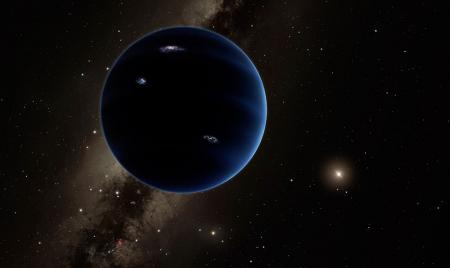
Two and a half months ago the discovery of "Planet Nine" was heralded as a kind of milestone for the solar system, thanks to a pair of Caltech planetary astronomers, Konstantin Batygin and Miichael Brown. Those who wish to read more details of the find can go here:
http://iopscience.iop.org/article/10.3847/0004-6256/151/2/22/pdf
Now, in the wake, it appears more yawns have been forthcoming than anything else
Two and a half months ago could as well have been a lifetime. Let's face it, that was before thousands had the chance to dig into the paper to unravel the study's hitherto hidden flaws. But that is the risk scientists take when they advance a new find, new model or theory and also one reason climate deniers have had to set up their own journals to get any respect. They simply couldn't get any from the actual professional climate journals - for which highly trained referees could too easily pick out the stumbles and unjustified extrapolations, claims, conclusions.
In the Planet Nine case, and recall the find hinged not on any direct detection but on indirect parameters associated with orbital features of 13 of the most distant objects in the Kuiper Belt, criticism was almost a given. This despite a blog entry from Brown, see:
http://bit.ly/Search-4-P9
Wherein he wrote:
"From some very simple calculations we can show that the probability of these alignments happening due to chance is only about 0.007%. You could also say that there is a 99.993% chance the alignments we are seeing in the outer solar system are real, and that we are not simply being fooled into seeing a pattern where none exists".
Maybe, but some aren't buying it any more than the climate deniers' claim that Michael Mann's 'hockey stick' (for anthropogenic warming) isn't real and we're all just being fooled by a cartoon. Not quite, since the Keeling curve also substantiates it.
For example, astronomer Brett Gladman of the University of British Columbia, reacted cooly to the Planet Nine claim. In his words (EOS: Earth & Space Science News, p. 5):
"The paper presents some interesting arguments but I think the claims are being made more strongly than the evidence merits."
Meanwhile, David Latham of the Harvard-Smithsonian Center for Astrophysics, remarked (ibid.):
"The arguments that Konstantin and Mike have presented are carefully worked out, but it's not a slam dunk."
My own take is even more basic: I look with skepticism on the find until the authors can come up with a full set of orbital elements, including: inclination angle, i, longitude of the acending node, eccentricity e,, semimajor axis a, argument of perihelion and period P.
In fact, the firm support of demanding the orbital elements as part of the discovery claim was fortified not long after the Brown-Batygin paper appeared. This occurred with an alternative hypothesis published in The Monthly Notices Letters of the Royal Astronomical Society, e.g.
http://bit.ly/RAS-paper
The paper, by Ann -Marie Madigan of the University of California-Berkeley, and Michael McCourt of the Harvard -Smithsonian Center for Astrophysics, suggested that gravitational interactions among the myriad, small icy objects in the outer solar system could suffice on their own to cause the orbital alignment of the six telltale objects in the Kuiper Belt that inspired the Planet Nine claim.
Their simulations showed that gravitational interactions among objects located from 100- 10,000 AU from the Sun would drive some of them to form a cone-shaped distribution, inclined to the Kuiper Belt. This, in turn, would give rise to the alignments Brown and Batygin inferred and lead (falsely) to the planet hypothesis.
As Madigan put it during a Jan. 26 lecture at the SETI Institute (see: http://bit.ly/SETI-talk):
"This spontaneous behavior is just something the disk does on its own. We don't need to invoke an external reason such as a ninth planet for it."
All of which shows again that the process of science is supreme in getting to objective truth, and that falsifiability and testability are part of this dynamic.
No comments:
Post a Comment